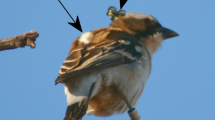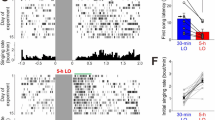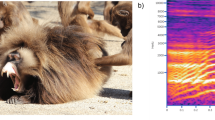Abstract
ETHOLOGISTS developed the idea that many animal species evolved mechanisms to control aggression among their members. This control is by the use of signals to reduce the probability of attacks by the opponent before injurious or lethal combats occur1–3. Although there are observations that are best explained by the theory, no direct experimental evidence has been presented. We report here one type of experimental evidence that seems to fit the theory.
This is a preview of subscription content, access via your institution
Access options
Subscribe to this journal
Receive 51 print issues and online access
$199.00 per year
only $3.90 per issue
Buy this article
- Purchase on Springer Link
- Instant access to full article PDF
Prices may be subject to local taxes which are calculated during checkout
Similar content being viewed by others
References
Lorenz, K., On Aggression (Harcourt, Brace and World, New York, 1966).
Tinbergen, N., Quart. Rev. Biol., 27, 1 (1952).
Marler, P., Darwin's Biological Work (edit. by Bell, P. R.) (Cambridge University Press, 1959).
Hsu, Y-C, Peking Soc. Nat. Hist. Bull., 3, 5 (1929).
Alexander, R. D., Behaviour, 17, 130 (1961).
Murphey, R. K., and Zanetsky, M. D., J. Exp. Biol., 56, 335 (1972).
Author information
Authors and Affiliations
Rights and permissions
About this article
Cite this article
PHILLIPS, L., KONISHI, M. Control of Aggression by Singing in Crickets. Nature 241, 64–65 (1973). https://doi.org/10.1038/241064a0
Received:
Issue Date:
DOI: https://doi.org/10.1038/241064a0
This article is cited by
-
Adaptation of codon and amino acid use for translational functions in highly expressed cricket genes
BMC Genomics (2021)
-
Lymphocyte subpopulation profiles and mitogen kinetics in immunological deficiency testing
Journal of Clinical Immunology (1987)
-
Response to sound in crickets without tympanal organs (Gryllus campestris L.)
Journal of Comparative Physiology (1973)
Comments
By submitting a comment you agree to abide by our Terms and Community Guidelines. If you find something abusive or that does not comply with our terms or guidelines please flag it as inappropriate.



